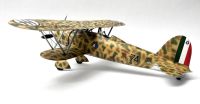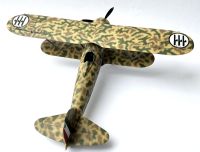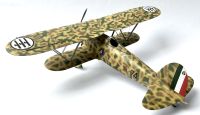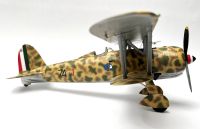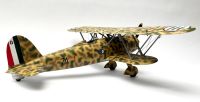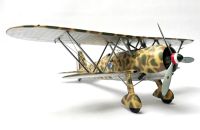ICM 1/32 Fiat Cr.42
By Bogdan Zajączkowski
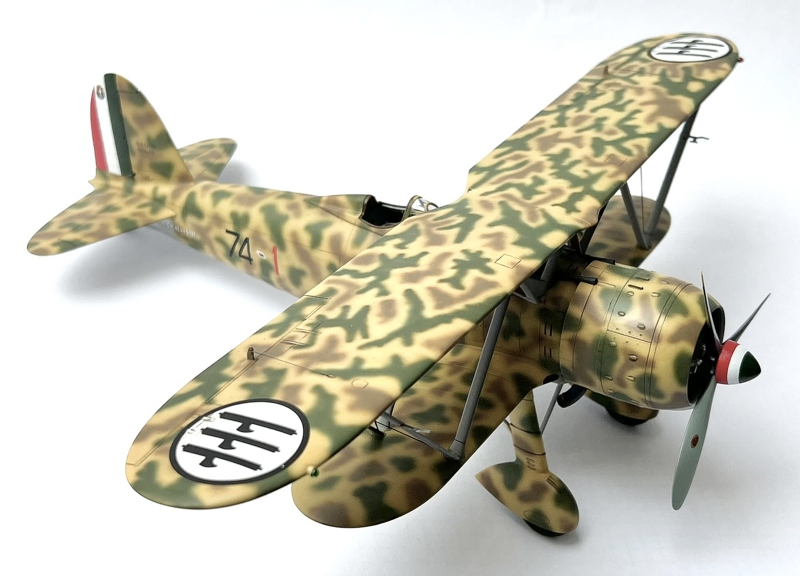
The Ukrainian company ICM is gaining a better and better reputation among modelers. Their latest models have been quite impressive and interesting, with very good quality and acceptable prices. One of these later kits is the Fiat CR.42 Falco. In this scale it’s the first injection molded kit of this iconic WWII Italian fighter. There is still available the 1/32 resin kit made by Silver Wings – although of remarkably good quality demands advanced modeler’s skills to build.
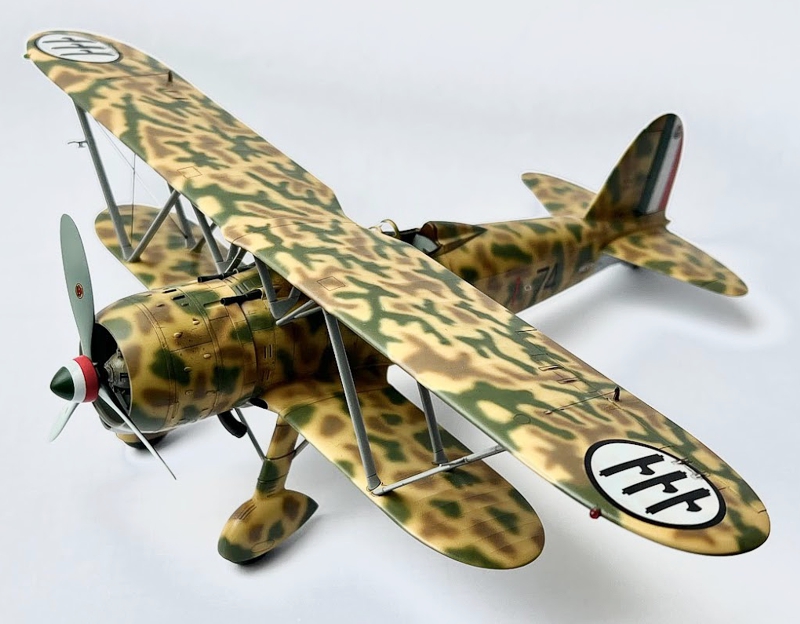
I wanted to build this kit just so: no stress (hopefully), no extra time spent on riveting, almost no extra parts, etc. What was in the box gave me hope to fulfill my dream.
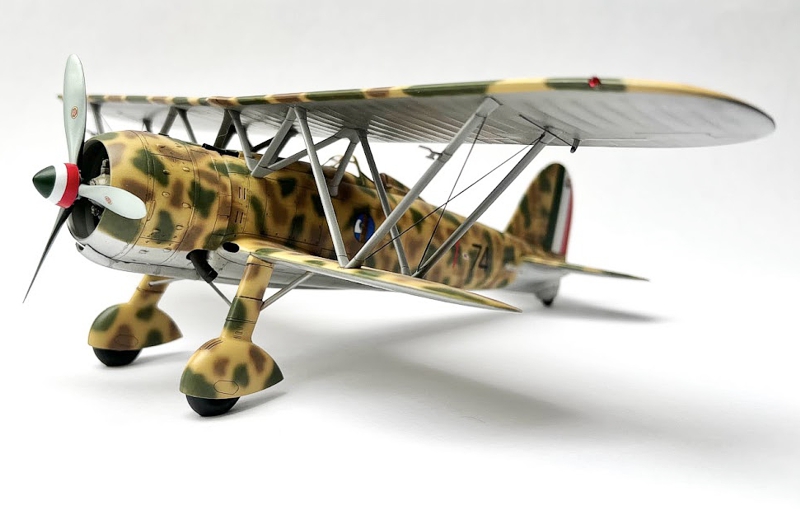
I started with the cockpit – what a surprise! There are plenty of details there – actually, the cockpit is a kind of model in itself. Some time ago I bought Eduard’s PE fret for the CR.42 cockpit so I decided to use it but in my opinion it is really not necessary. The level of detail in the ICM kit is impressive! Some small details are lacking but they’re quite easy to do even without extra PE parts. The most valuable PE elements were seatbelts because there are no such parts in the kit.
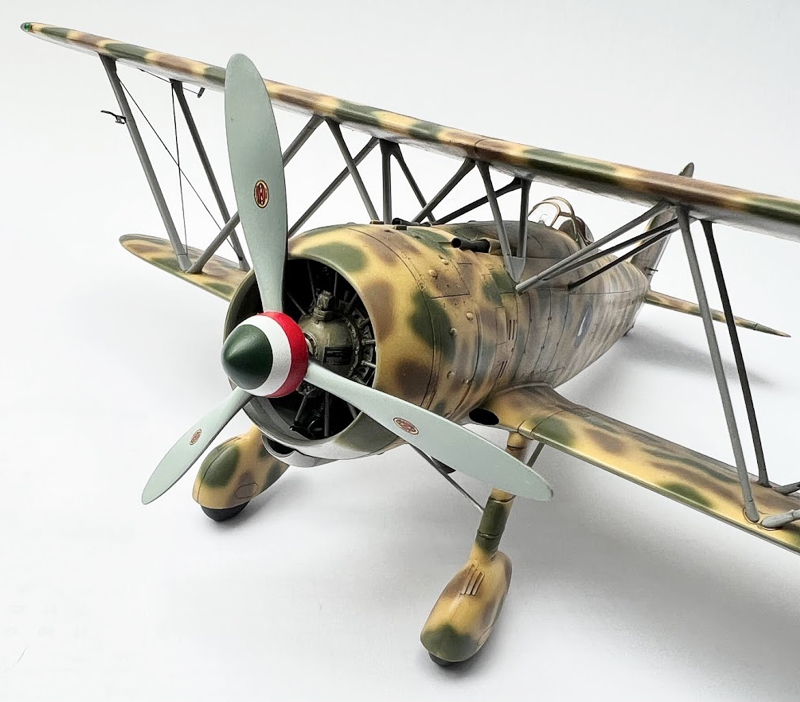
The next step was building the aircraft’s engine – ICM did a really good job here. What you’ve got in this kit is a really good replica of a Fiat A.74 14-cylinder air-cooled engine. Another ICM supplied “model in a model”. I just added some wiring and painted everything.
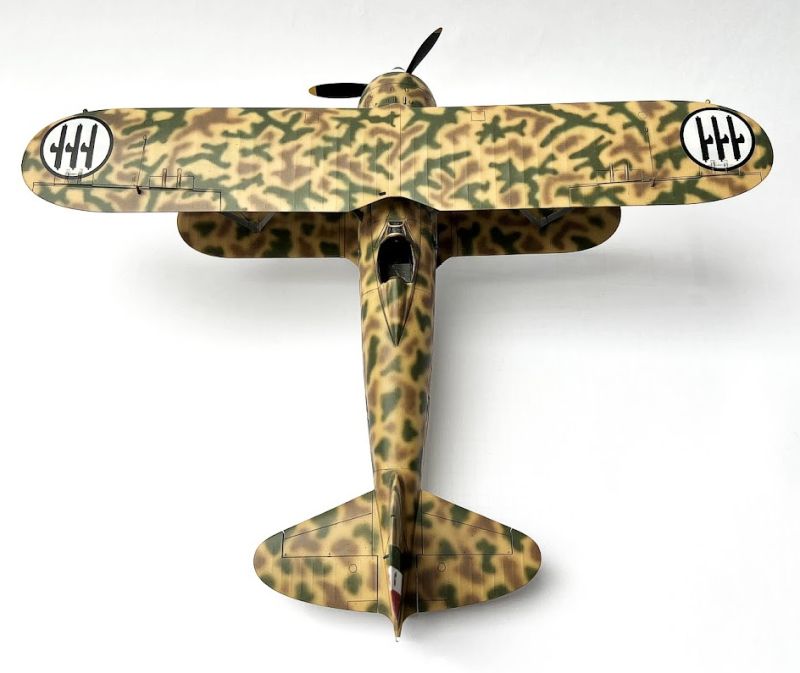
The rest of the build went straightforwardly. Fit of the parts was extremely good – no putty was required. At the final stage I just made a few small corrections with Mr. Surfacer – that’s all. The one and only thing which needed some extra work was the engine’s cowling panels. Obviously ICM designed this kit for the open-panel option to exhibit the engine with all its details. I had to carefully fit all the panels together, adjusting them and filling the joints. Sanding and polishing destroyed some of the panel lines so I had to recreate them – both using a scriber and using self-adhesive aluminum foil. The result was quite satisfactory.

The model was primed and polished. I decided to paint it in the early Fiat mimetica colors (Giallo Mimentico 1, Verde Mimetico 1, Marrone Mimetico 1, silver dope lower surfaces). All camo was airbrushed freehand using Harder & Steenbeck Infinity airbrush with 0,2 nozzle. I use only MRP paints – they’re very thin, very quick drying and the most important – they’re ready to use in an airbrush.

I’ve built this Fiat as Capitano Guido Bobba’s machine – CO of 74a Squadriglia, 23 Gruppo, 3 Stormo CT while in Cervere, May 1940. I painted this plane in its early markings i.e. tricolor rudder which was to be changed for so called Savoia cross on 12/06/1940. Tricolor propeller hub needed some time to be painted properly – after a few not so good ideas how to execute it I found a very easy way to make it good – I just used Tamiya masking tape for curves. It’s vinyl, it adheres nicely to round shapes, so it worked perfectly. I started from the propeller hub base with first wrap, then came another one… that’s it. So simple – so efficient.
And so here it is – another Italian plane in my still growing collection – and a nice representation of an early mimetica camo from just before the war.
© Bogdan Zajączkowski 2024
This article was published on Friday, February 16 2024; Last modified on Sunday, February 18 2024

